What's New
Displaying results 1821 - 1830 of 4052
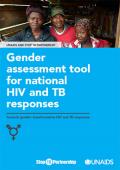
Resource | Tools,
The HIV/TB Gender Assessment Tool developed not only supports countries with the submissions of gender sensitive concept notes to the Global Fund to Fight AIDS, Tuberculosis and Malaria (GFATM) but is intended to assist countries to assess their HIV and TB epidemic context and response from a gender perspective, helping them to make their responses gender sensitive and reduce the dual burden of HIV and TB infection. This tool does not replace the HIV Gender Assessment Tool instead it is intended to work in areas of HIV and TB co-infection as one assessment or can also be conducted for each disease.
A gender assessment process, led by national stakeholders and partners, helps to identify gender-related barriers to services as well as specific needs of women, men, transgender people and key and vulnerable populations, in the context of HIV, TB or HIV/TB co-infection, in the process reinforcing political commitment and increasing civil society capacity, to better respond to these barriers and needs.
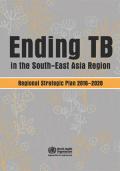
Resource | Publications,
This Regional Strategic Plan towards Ending TB in the SEAR 2016–2020 describes the future directions and focus of the work towards TB elimination aiming to support Member States in reducing tuberculosis mortality and incidence in line with global targets as set in World Health Assembly (WHA) resolution WHA67.1.
The resolution will guide countries in addressing persisting and emerging epidemiological and demographic challenges and advancing universal health coverage and robust health systems. The plan builds on and expands the existing updated Regional Strategic plan for TB Care and Control 2012–2015 and focuses on implementation of the End TB Strategy in the coming 5 years within the overall scope of the 20-year strategy covering 2015–2035.
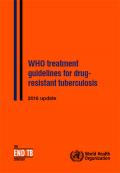
Resource | Guidelines,
The scope of the WHO treatment guidelines for drug-resistant tuberculosis, 2016 update thus differed from the one that guided the previous update of the WHO policy recommendations on the programmatic management of drug-resistant TB in 2011. It did not cover aspects of policy guidance on the programmatic management of drug-resistant TB that were of lesser priority or for which no new evidence has emerged since the 2011 revision. These included questions relating to the use of rapid diagnostics for RR-TB, the monitoring of response to treatment, the duration of longer (“conventional”) MDR-TB regimens, the delay in starting antiretroviral therapy in MDR-TB patients with human immunodeficiency virus (HIV) and models of care.
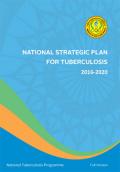
Resource | Publications,
The National Strategic Plan (NSP) for Tuberculosis (TB) 2016-2020 builds on the past experiences for the National Tuberculosis Programme and its partners. This NSP provides a roadmap for delivering quality TB prevention and care service to the entire population, as an integral part of the country's move toward Universal Health Coverage. Between 1990 and 2015, Myanmar reduced the prevalence of TB by 50%, meeting the targets set by the Millennium Development Goals. Going forward, the country aims to further accelerate the rate decline.
The NSP is fully aligned with the World Health Organization End TB Strategy and is organized according
to three Strategic Directions, highlighted below. It also embraces four key principles:
- government stewardship and accountability, with systematic monitoring and evaluation;
- formal engagement of civil society organizations and communities,
- protection and promotion of human rights, ethics and equity; and
- adaptation of the strategy and targets at decentralized levels, with National Tuberculosis Programme coordination.
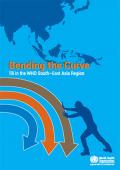
Resource | Publications,
The WHO South-East Asia Region is home to 26% of the world's population and yet accounts for 41% of the global burden of tuberculosis (TB) incidence. In 2014, there was an estimated TB prevalence of 5.4 million and an incidence of 4 million. About 460,000 people died of the disease that year in the Region. The Region is also home to around 30% of the estimated global cases of multidrug-resistant (MDR) TB. Given the Region's outsized TB disease burden, not doing enough and not doing it fast enough is simply unacceptable. Delays in addressing the disease mean not only perpetuating the disease but also the associated suffering and resultant deaths.
WHO's Global End TB Strategy was endorsed by the World Health Assembly in Geneva in May 2014. The Strategy calls for an 80% reduction in TB incidence by 2030 and a reduction of 90% by 2035. The Strategy is based on principles of government stewardship and accountability; strong coalition with civil society organizations and communities; protection and promotion of human rights, ethics, and equity. All Member States need to adopt this bold and comprehensive Strategy to end TB.
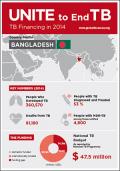
Resource | Infographics,
TB is curable, but 37,000 people die every year from this airborne disease in our region - that’s almost five deaths every hour. Despite the shocking statistics and the heart-wrenching stories, international financial support for TB programmes in the European region is declining. These factsheets give a snapshot view of the TB burden in the countries.
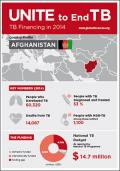
Resource | Infographics,
TB is curable, but 37,000 people die every year from this airborne disease in our region - that’s almost five deaths every hour. Despite the shocking statistics and the heart-wrenching stories, international financial support for TB programmes in the European region is declining. These factsheets give a snapshot view of the TB burden in the countries.
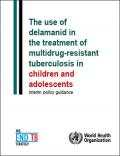
Resource | Guidelines,
In October 2014, the World Health Organization (WHO) issued an interim policy guidance on the use of delamanid in the treatment of patients with multidrug-resistant tuberculosis (MDR-TB), a recommending that delamanid may be added to a WHO-recommended regimen in adult patients with pulmonary MDR-TB (conditional recommendation; very low confidence in estimates of effect), under five conditions: proper patient inclusion, adherence to the principles of designing a WHO-recommended MDR-TB regimen, close treatment monitoring, active pharmacovigilance and proper management of adverse drug reactions, and informed patient consent. This interim policy did not include children, because of the absence of data in this population. However, data describing safety, tolerability and pharmacokinetics (PK) of delamanid in children with MDR-TB aged 6–17 years recently became available hence, WHO convened a Guideline Development Group (GDG) meeting on 29 June 2016 to review this evidence.
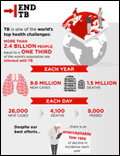
Resource | Infographics,
TB is one of the world's top health challenges. More than 2.4 billion people, equal to a one third of the world's population are infected with TB. 3.5 people are either not diagnosed. The proportions of missed cases remains the same each year. Many of those missed will either die, follow some unknown treatment but most will continue to infect others.
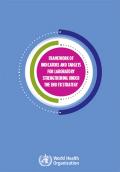
Resource | Tools,
The World Health Organization’s (WHO’s) End TB Strategy calls for the early diagnosis of tuberculosis (TB) including universal drug-susceptibility testing (DST). A prerequisite for any national TB programme to reach this goal is a quality-assured laboratory network equipped with rapid diagnostics.
This Framework of indicators and targets for laboratory strengthening under the End TB Strategy serves as a guide for all countries developing plans for laboratory strengthening during 2016–2025. The indicators measure programmes’ capacity to detect TB accurately and rapidly using new diagnostics (known as WHO-recommended rapid diagnostics, or WRDs), provide universal DST, and ensure the quality of testing.





